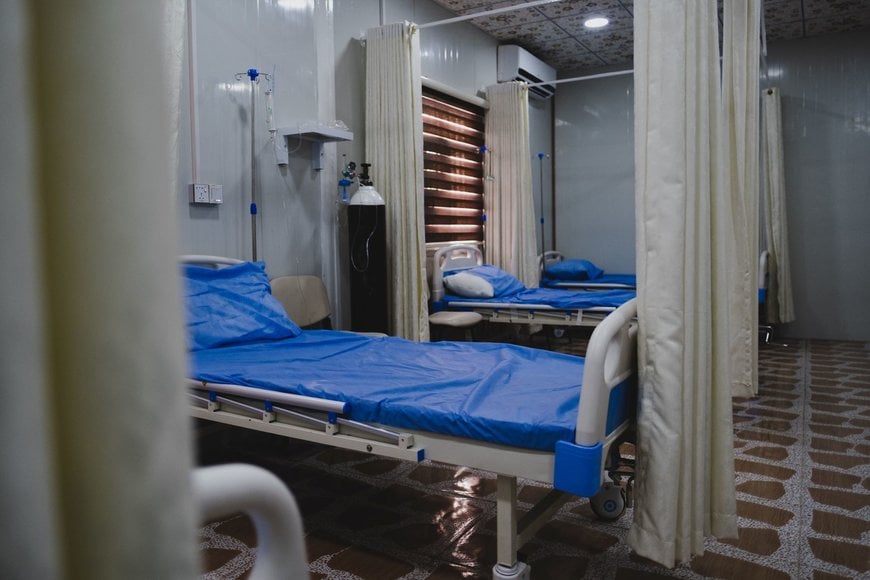www.industryemea.com
17
'22
Written on Modified on
Powering rural hospitals with photovoltaics
Nextgen nano Discusses on How rural hospitals are adopting solar power to meet their electricity needs.

Rural hospitals around the world face constant electricity shortages because of susceptibility to natural disasters, a lack of infrastructure and the growing cost of diesel. This is especially true in developing nations. It is estimated that three out of four health facilities across sub-Saharan Africa lack access to electricity. Here, Carr Ho, head research scientist at organic photovoltaic devices innovator NextGen Nano, discusses how some rural clinics have harnessed solar power to generate additional electricity and how this can be replicated in other communities.
Rural hospitals across the globe are often unable to connect to their national electricity grid, meaning individuals have to drive several kilometres in times of emergency. This increased transport time endangers those that need help. Additionally, in the event of a natural disaster, hospitals may have to rely on backup diesel generators that can easily run out of fuel: something that puts patients directly at risk. These systems are not sustainable and limit a hospitals ability to further develop.
Adverse weather conditions, such as a monsoon season that can last several months, also affect access to electricity. Not only can harsh weather severely damage the electricity grid but the ensuing power outages can last for weeks. This risk, combined with the high cost and carbon emissions of using backup diesel generators, has led some clinics to begin investing in on-premise solar power.
Clinics in countries like Ghana are now looking to solar power to ensure they can provide services throughout the day and night. Over the past year, the Ghana Health Service has installed solar power systems in 30 rural clinics. Since then, the clinics have been able to run their lighting and ventilation continuously, providing medical services to a high standard. Many of these projects also involve training staff and selecting people from the surrounding community to help operate and manage these systems, which allows the communities to be more self-sufficient as they reap the benefits of their own resources.
Modern photovoltaic (PV) systems are well suited for rural communities. They are relatively low maintenance, easy to transport and scalable. Though there are concerns over upfront costs, the levelised cost of electricity from PV panels has decreased by 85 per cent from 2010, according to a report by the International Renewable Energy Agency. Meanwhile, a study by the US Agency for International Development found that the lifetime costs of an on-site PV system was $14,000 while the lifetime cost of a small diesel generator-only system was $63,000. This lower cost will benefit these communities in the long run.
As solar power technology develops, the price will continue to decrease. Scientists are now finding new ways to innovate with organic PVs (OPVs), such as NextGen Nano’s PolyPower®. Not only is the manufacturing cost of OPVs lower, but they are also more lightweight and can store larger amounts of solar energy than traditional panels.
Additionally, OPV panels can be flexible, and are more than 40 times lighter and thinner than their silicon predecessors, meaning they can be attached to buildings that may struggle to support a standard solar panel. As the third generation in solar technology, OPVs have the potential to make solar power more accessible to those that need them.
However, further research is needed to ensure third generation solar continues to be suitable for the needs of rural hospitals. NextGen Nano is one of the companies leading the way in research to improve the efficiencies and production cost of OPVs. Research into OPV performance and applications need to be supported if individuals want to make the most of what solar energy has to offer.
Unfortunately, one of the main issues holding back more rural hospitals from using solar power is the lack of solar vendors, causing communities to be excluded from the market. This is not only due to the remoteness of these clinics but also because there is little information on the demand for electricity there. Coordinated efforts can help overcome the challenges of upfront cost and vendor availability. Governments, vendors and stakeholders need to come together to demonstrate the market potential in remote areas to make solar power more accessible.
Around the world, the number of solar-powered medical facilities are increasing, particularly in rural areas, and they’ve played a vital role in improving medical care. With the increasing development and decreasing cost of PV technology, there is the potential to provide continuous care to patients without increasing carbon emissions.
www.nextgen-nano.co.uk

